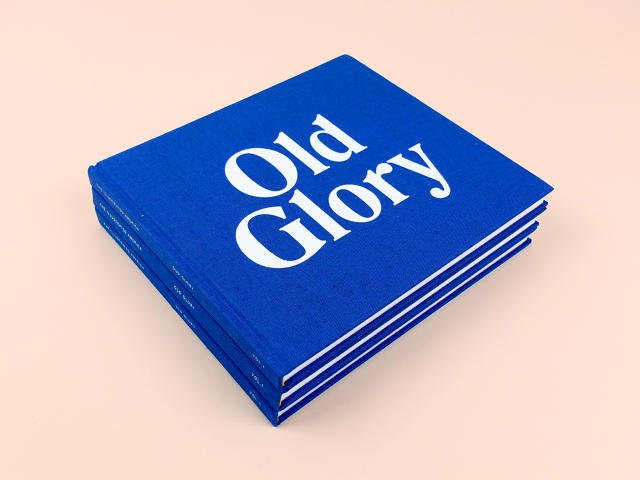
The Star Spangled Banner has had many iterations since Betsy Ross’s first design. The American flag’s 50-star design as we know it today became official in 1960, but one of the most interesting—and lesser known—chapters in its history came about during the Eisenhower era, when the government was contemplating how to incorporate Alaska and Hawaii.
Americans were so interested in their future flag that thousands of people submitted unsolicited designs to the president for consideration. Old Glory, the inaugural book of the L.A. publisher Atelier Éditions, chronicles 50 of those crowdsourced concepts.

Kingston Trinder, a New Zealand-born writer and the co-director of Atelier Éditions, has long been interested in American history. In researching the current flag’s backstory, he discovered that it was apparently designed by a high school student named Robert G. Heft for a class project in 1958. “Officially no competition for the flag’s design then was ever enacted by the Eisenhower Administration, although of course such patriotic flag-making was wholly encouraged, [except by] many irate American flag manufacturers, who now possessed thousands of obsolete 48- and 49-starred American flags,” Trinder says.
Trinder was so fascinated with the “spontaneous submissions” from the 1950s that he trekked to the Eisenhower Presidential Library in Abilene, Kansas, where the original drawings—about 3,000 in all—are stored. He and Pascale Georgiev, editor and co-director of the publisher, picked the best ones for Old Glory.
Georgiev especially admires the submissions from school children. “Their collages are quite lovely in their minimalism,” she says. “Also, there were so many that were beautifully watercolored, which added textures and nuances to the flag. One that stood out was by Harry A. Froboess, which features a Statue of Liberty holding a flaming torch along side the red and white stripes—it’s really beautiful and intricate.

Crowdsourced design has become a sore subject, these days. Rarely does it produce anything good except for a publicity stunt: New Zealand recently held acompetition for a new flag that it ultimately rejected. The AIGA has issued a public letter railing against spec work in the wake of the Tokyo 2020 Olympics logo competition, which was fraught with plagiarism accusations.
“I’m an admirer of the egalitarian nature of crowdsourcing, yet often less than enthused with what it actuality yields,” Trinder says. “As a native New Zealander, witnessing firsthand the extraordinary, questionable, and wholly terrifying designs for consideration as our new flag, I confess, I began to question the validity of crowdsourced flag design. Weaving the wheat throughout with the chaff isn’t necessarily the best methodology—although a vox populi is always more preferable to a mandate, come what may.”
Interestingly, crowdsourcing seemed to work for the United States in the ’50s. Chalk it up to democratic idealism. Flip through the designs in the slide show above.
[Source:-co design blog]





